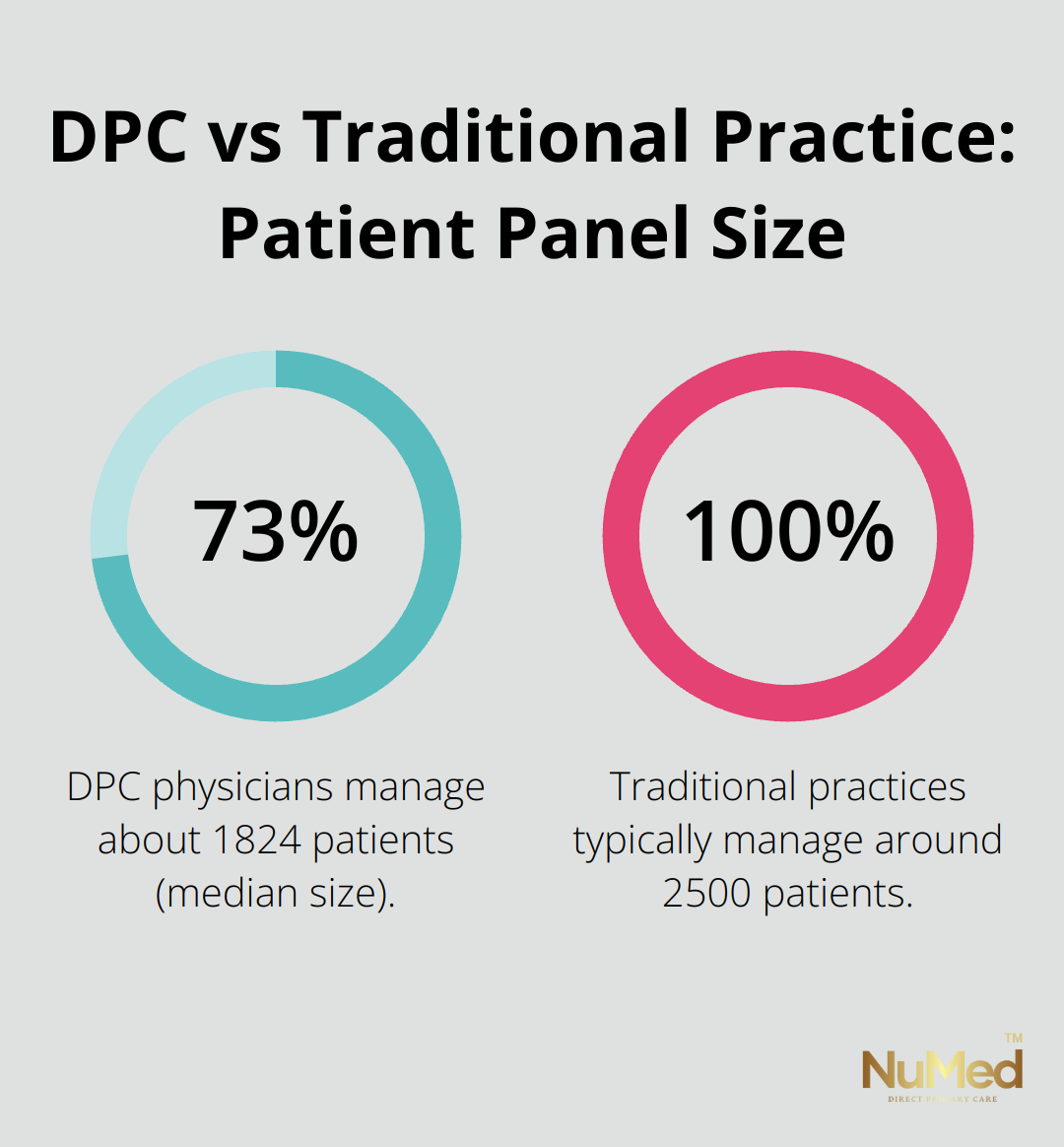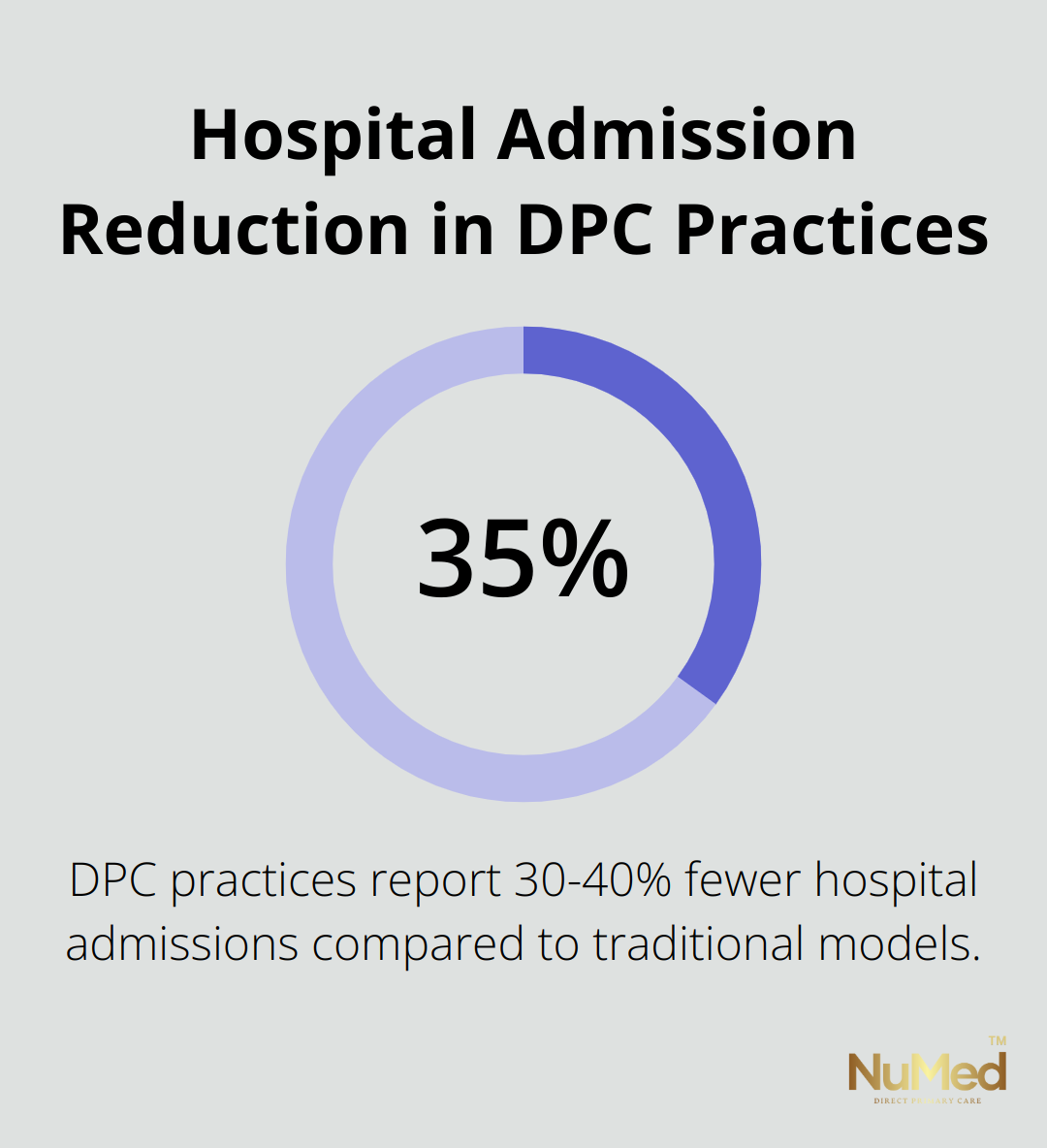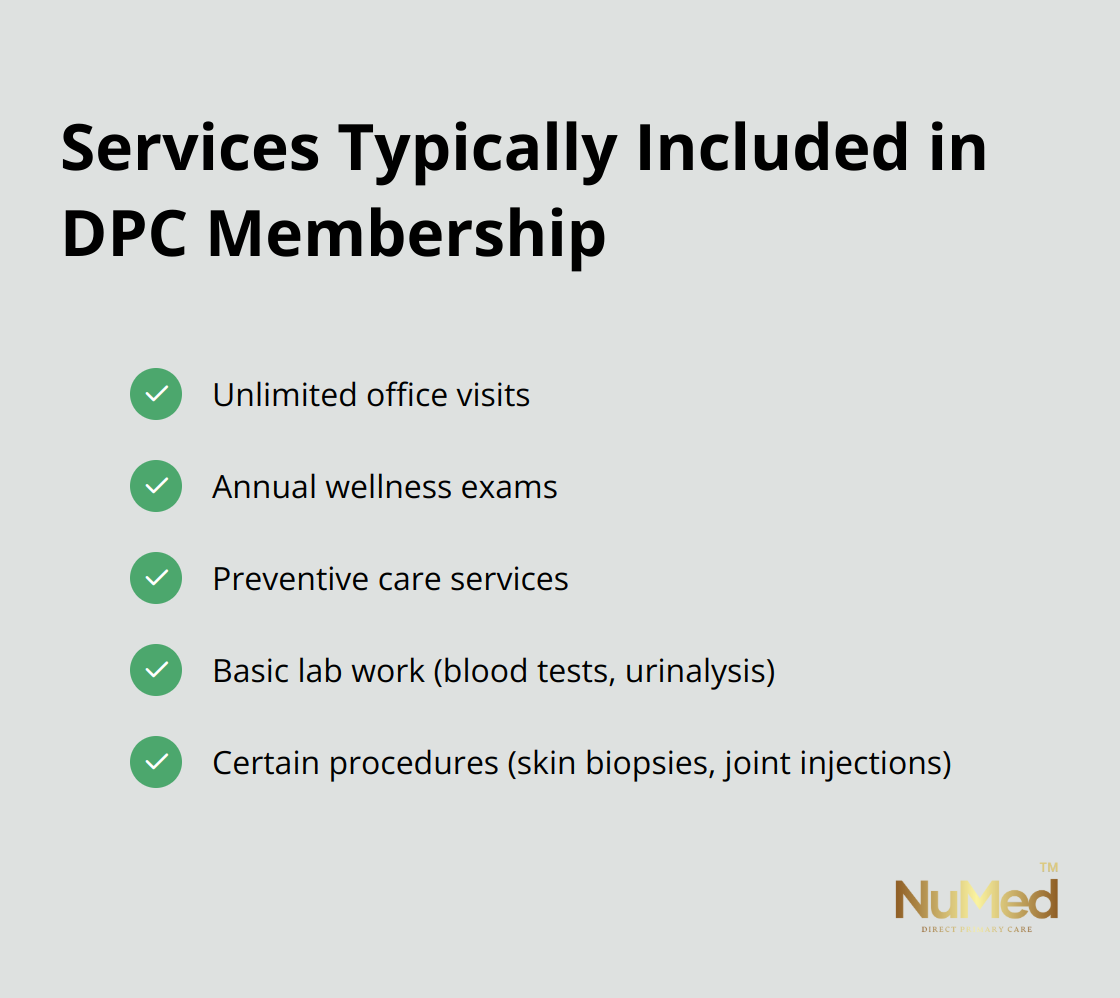At NuMed DPC, we’re often asked, “What is the Direct Primary Care model?” It’s a question that reflects growing interest in alternative healthcare approaches.
Direct Primary Care (DPC) is revolutionizing how patients and doctors interact, offering a membership-based system that prioritizes personalized care and accessibility.
In this post, we’ll explore the core principles of DPC, its benefits, and how it’s reshaping the healthcare landscape.
What Is Direct Primary Care?
A Revolutionary Healthcare Model
Direct Primary Care (DPC) transforms the delivery of primary care. This membership-based approach allows patients to pay a monthly or annual fee directly to their primary care provider. The fee covers most primary care services, including office visits, basic lab work, and certain procedures. With a smaller panel of patients, DPC physicians can spend more time with each one, allowing for conversations that can yield clinical insights for care.
Eliminating the Middleman
DPC removes insurance companies from routine primary care, creating a more direct patient-doctor relationship. In a DPC practice, physicians typically manage about 1824 patients (median size, with panel sizes ranging from 265 to 13,147 patients). This smaller patient panel allows doctors to dedicate more time and attention to each individual.

Transparent and Predictable Pricing
A standout feature of DPC is its clear pricing structure. Patients know their healthcare costs upfront, making budgeting easier. The monthly fee (usually $65 to $85 for adults) covers most primary care services, eliminating unexpected bills often associated with traditional healthcare models.
Strengthening Patient-Doctor Relationships
DPC practices prioritize accessibility. Patients often enjoy:
- Same-day or next-day appointments
- Longer visit times
- Direct communication with their doctor (via phone, email, or text)
This increased access builds stronger patient-doctor relationships and enables more comprehensive, personalized care.
Emphasizing Preventive Care
With more time per patient, DPC physicians can focus on preventive care and chronic disease management. This proactive approach often leads to better health outcomes and potentially reduces overall healthcare costs long-term.
It’s important to note that DPC doesn’t cover everything. Patients still need additional coverage for specialized care, emergencies, and hospitalizations. However, for primary care needs, DPC offers a refreshing alternative to traditional healthcare models.
As we explore the benefits of Direct Primary Care in the next section, you’ll see how this model can significantly improve your healthcare experience.
Why Direct Primary Care Transforms Healthcare
Deeper Doctor-Patient Relationships
Direct Primary Care (DPC) revolutionizes healthcare by fostering stronger connections between doctors and patients. DPC physicians manage smaller patient panels (typically around 600 patients compared to 2,500 in traditional practices), which allows them to dedicate more time to each individual. Appointments often last 30-60 minutes, enabling in-depth discussions about health concerns and treatment options. This approach results in a more thorough understanding of each patient’s health history, lifestyle, and goals.
Unparalleled Access to Care
DPC significantly improves access to healthcare. Patients often receive same-day or next-day appointments, which eliminates long wait times common in traditional practices. Many DPC practices offer direct communication channels with physicians via phone, email, or text. This level of access can lead to earlier intervention for health issues and better management of chronic conditions.
Crystal Clear Pricing
DPC eliminates the complexity and unpredictability of healthcare costs. Instead of navigating copays, deductibles, and surprise bills, patients pay a fixed monthly fee (typically ranging from $65 to $85 for adults). This fee covers most primary care services, including office visits, basic lab work, and certain procedures. The transparency in pricing allows patients to budget for their healthcare expenses more effectively and reduces the financial stress associated with seeking medical care.
Tailored, Comprehensive Care
The DPC model enables a more holistic approach to healthcare. Physicians have more time and fewer administrative burdens, which allows them to focus more deeply on patients’ health concerns. This comprehensive care often includes preventive services, chronic disease management, and even some specialty care coordination. DPC practices report 30-40% fewer hospital admissions compared to traditional models. This focus on preventive care and thorough treatment can lead to better health outcomes and potentially lower long-term healthcare costs.

Empowering Patients
DPC empowers patients to take control of their health. With more time and direct access to their physician, patients can ask questions, discuss concerns, and actively participate in their healthcare decisions. This collaborative approach often leads to increased patient satisfaction and better adherence to treatment plans.
The DPC model addresses many of the frustrations associated with traditional healthcare systems. In the next section, we’ll explore how DPC works in practice and what patients can expect when they join a DPC practice.
How Direct Primary Care Works
Membership-Based Model
Direct Primary Care (DPC) operates on a straightforward membership model. Patients pay a monthly fee (typically $75 to $100 for adults) which covers a wide range of primary care services. This fee structure removes copays, deductibles, and complex billing processes associated with insurance, reducing administrative costs and allowing physicians to focus on patient care.
Service Coverage
The monthly membership fee at DPC practices usually includes:
- Unlimited office visits
- Annual wellness exams
- Preventive care services
- Basic lab work (blood tests, urinalysis)
- Certain procedures (skin biopsies, joint injections)

Services can vary between practices, so patients should clarify what’s included in their specific DPC membership.
Technology Integration
DPC practices often use technology to enhance patient care and accessibility. Many offer:
- Telemedicine services (video calls, secure messaging)
- Electronic health records (EHRs) accessible to patients
These technological tools promote transparency and enable patients to actively participate in their healthcare.
Handling Specialized Care
While DPC covers most primary care needs, it’s not a complete replacement for health insurance. For specialized care, DPC physicians often act as coordinators and advocates, serving as a patient’s on-ramp to the health care system and playing a pivotal role in coordinating care at all levels.
Some DPC practices have partnerships with local specialists or imaging centers to offer discounted rates to their members.
Emergency Situations
In emergencies, DPC physicians are typically available for consultation. However, patients still need to rely on traditional emergency services. This is why many DPC patients maintain a high-deductible health insurance plan for catastrophic coverage.
DPC models (like NuMed Primary Care) may combine science, ancestral wisdom, common sense, and practical experience to provide a more holistic approach to healthcare. The goal is not just to treat symptoms, but to address the root causes of health issues and empower patients to take control of their well-being.
Final Thoughts
Direct Primary Care (DPC) transforms healthcare delivery by removing insurance complexities from primary care. This model offers patients a simpler, more personalized experience with longer appointments and easy access to their physician. DPC addresses many frustrations associated with traditional healthcare systems, potentially reducing costs and improving patient satisfaction.
The Direct Primary Care model represents a significant shift in healthcare, but it doesn’t replace all forms of medical coverage. Patients should consider maintaining a high-deductible plan for emergencies and specialized care. It’s important to review the specific services offered by a DPC practice to ensure they align with individual healthcare needs.
At NuMed Primary Care, we strive to provide patient-centered care through the DPC model. Our approach combines modern medical science with holistic practices, aiming to address the root causes of health issues. We offer lab services, functional medicine, and health coaching, all tailored to each patient’s unique needs.
















